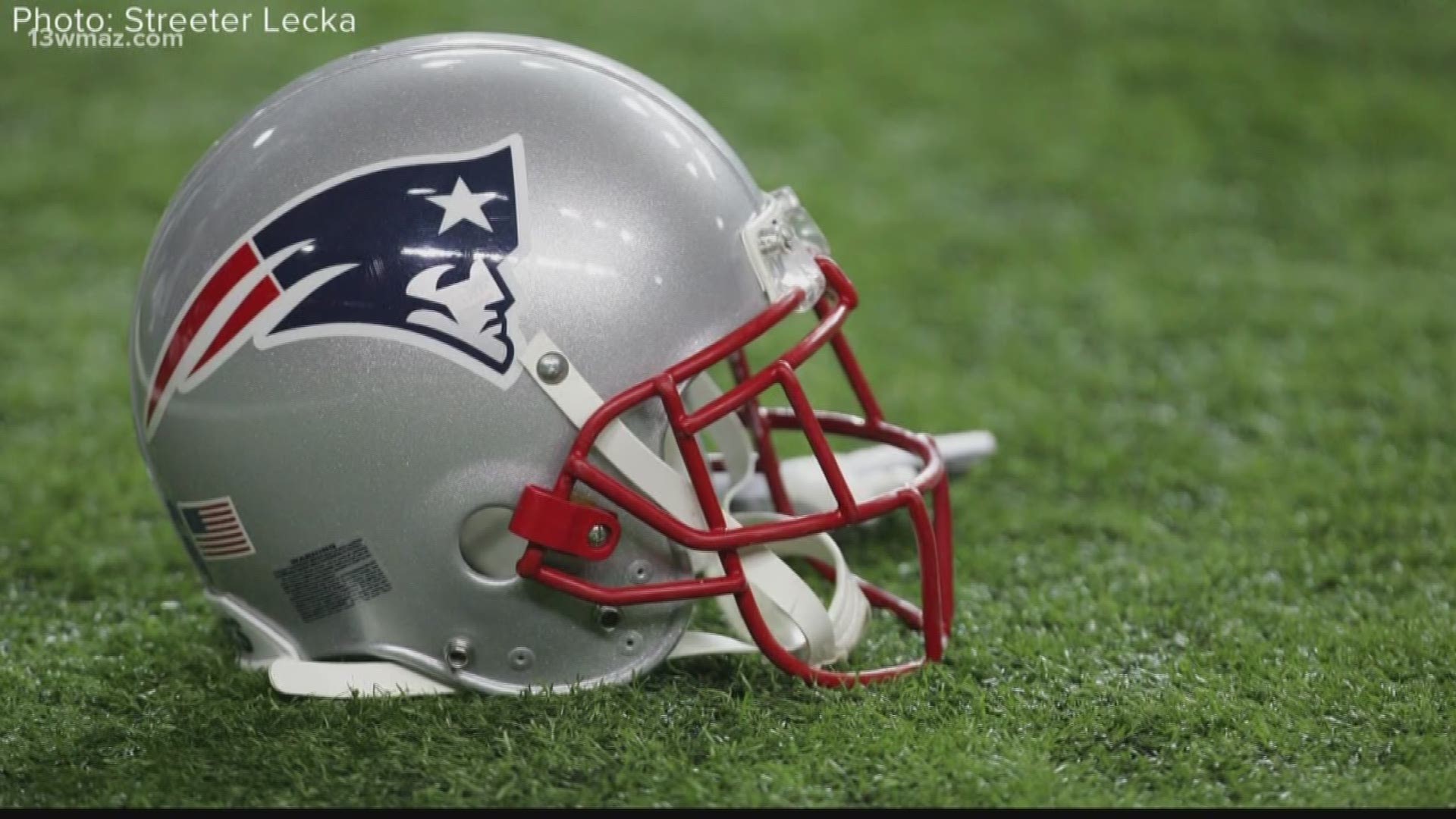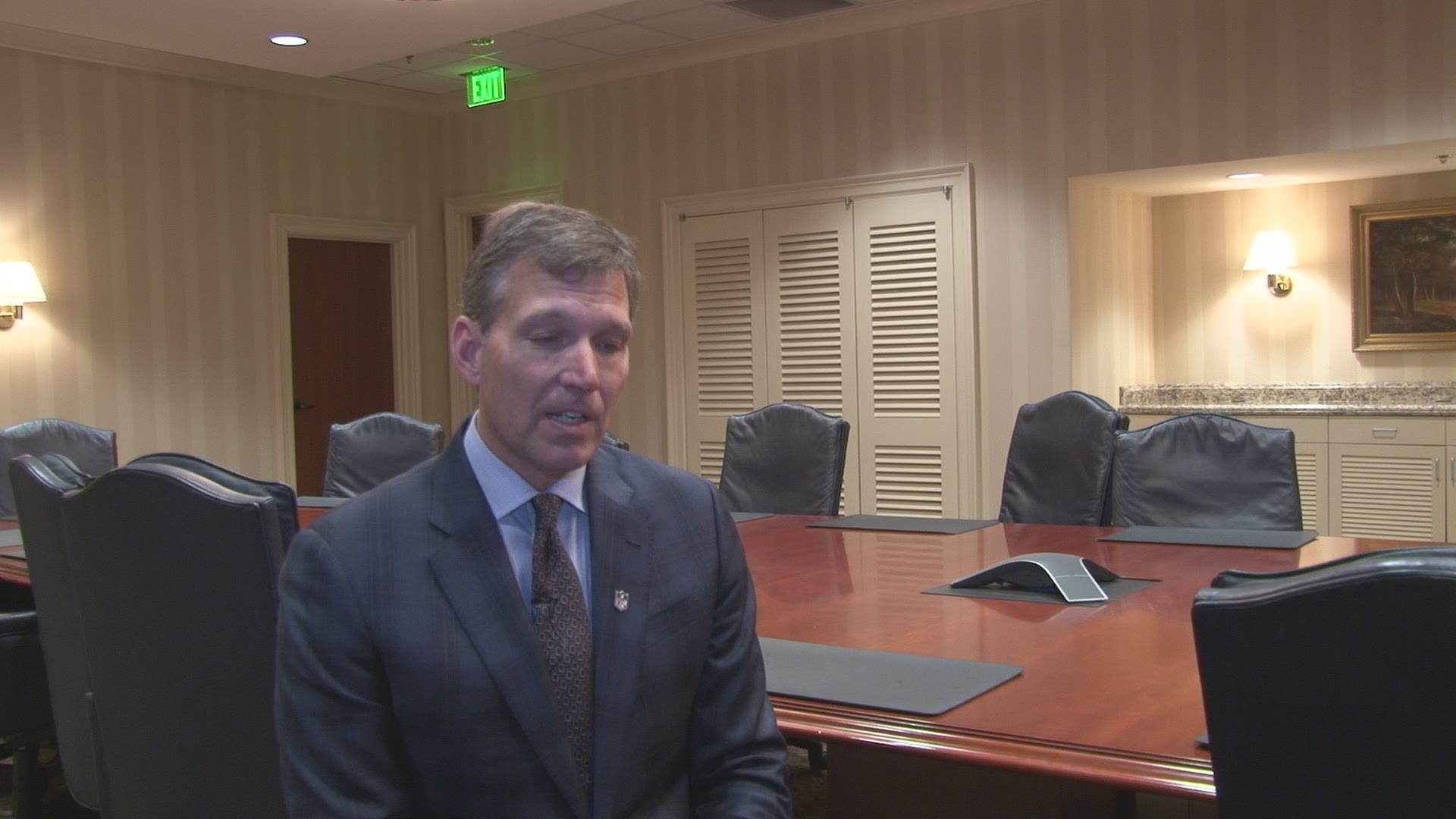The Super Bowl is the big football finale of the season, but it also kicks off a new season of data-crunching and conversations for NFL officials and committees about what went right and what still needs some improvement.
Concussions and player safety will once again be a big part of that agenda.
"The overall concussion rate in games was down 29 percent this year," said Dr. Allen Sills, the NFL's Chief Medical Officer. "We'll ask ourselves the same questions. What can we change on the field that can drive that rate down even further?"
The concussion rate dropped from 281 last season to 214 this year. This comes after a year of changes both on and off the field as part of a targeted approach by the league to reduce head injuries.
"We had three points of emphasis. One was getting players in better-performing helmets. Two was in reducing pre-season and training camp concussions, and three was on style of play, which lead to a couple of rule changes."
Before the start of this season, researchers combed through footage of all plays that resulted in a concussion over a three year period. They then recreated those same forces and conditions in a lab setting.
"The goal is to better describe how helmets are performing in collisions," said Dr. Sills. "Clearly there are differences in how helmets perform and there are safer helmets that will reduce the risk of concussions."
That research prompted the NFL to ban ten helmet styles that didn't perform well on the field and in the lab.
"We also learned that rules changes matter," says Dr. Sills. "We've made over 50 rules changes directly related to health and safety over the last 15 years and I think there will be a lot more to come."
One of the most recent rules changes involves the kickoff play. Among the changes, players on the kicking team are no longer allowed to get a running start. Wedge blocks are also banned.
"The special teams coaches themselves actually got together and proposed those changes because they felt like the play might disappear otherwise."
The NFL adopted those changes for one year. Dr. Sills says preliminary numbers showed there were no concussions reported on kickoffs during the pre-season this year, but he says they'll need to see the rest of the data before making any conclusions or decisions. He says the goal of the change was also to reduce the overall injury rate during kickoffs.
The NFL is also considering rules changes for the punt play.
"Special teams plays, both kickoffs and punts suffer from the same basic problem, which is both speed and distance. You've got large players running a long distance at high rates of speed, so when you do have a collision, there is a lot more energy involved in those collisions."
The NFL put out a challenge for researchers to come up with the best way to reduce injuries on punt plays. The top four finalists presented their ideas during Super Bowl weekend and those suggestions will be considered by the NFL Rules Committee.
Dr. Sills says players, coaches, and team owners have been supportive of initiatives to make the game safer, and he hopes fans will understand the importance of their efforts as well.
"We'd be remiss not to take advantage of what we're learning to improve safety, but that doesn't mean we're going to be left with a less entertaining game to play or watch."
Dr. Sills adds reducing injuries is really a benefit to all.
"At the end of the day, coaches want the best players to play and be available on the field, and the best way to ensure that is to keep them safe."
That's also prompted the NFL to fund research aimed at reducing lower body injuries, including the interaction between different cleat styles and ground conditions.
Dr. Sills is hopeful all of their research will help coaches and players at all levels of competition.
"There are a lot of common elements here, whether it be helmet design, style of play, or how we take care of athletes."
Robin Hines, Executive Director the Georgia High School Association agrees.
He's interested in learning from the latest research and approaches taken by the NFL and using it to help keep high school athletes safer.
Hines also says he wants to encourage Georgia high schools to have an athletic trainer as a first line of defense when it comes to player safety.
Both Hines and Dr. Sills agree there is still a lot to be done to protect players at all levels, but Sills says he's encouraged that a more data-driven approach will help coaches, players, and medical staff focus on the same goal.



